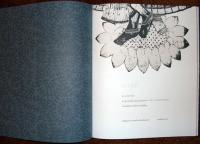The Gita Govinda or Song of Krishna is considered by many experts to be among the finest examples of Sanskrit poetry. It was written in the 12th century by the great poet, Jayadeva, and describes the relationship between the Krishna and his lover, Radha. The poetry is organized into 12 cantos or chapters, each sub-divided into 24 divisions called Prabandhas, containing couplets grouped into 8, called Ashtapadis.
The first English translation of Jayadeva’s 1000-year-old songs was by Sir William Jones in 1792. This new translation was completed by the contemporary poet, Andrew Schelling, who selected 29 poems from the 12 cantos to create a suite of poetic images of desire and longing, embracing both introspection and eroticism.
Schelling lives in Boulder, Colorado, where he teaches poetry, Sanskrit, and wilderness writing at Naropa University. He was the 1992 recipient of the Academy of American Poets award for translation and received a Witter Bynner Foundation for Poetry grant in 1996 and 2001. For more of his translations, see: Amaru, Erotic love poems from India. A translation of the Amarushataka by Andrew Schelling (Boston; London: Shambhala, 2004). Indo-European Philology Coll. (Indo). Firestone, PK3791.A43 A812 2004
Printed at emdash Press, Kamini employs 20 colors to capture the various blue manifestations of Krishna. The text is printed in English and Sanskrit, hand-set in Dante type on Bugra paper. The images, photographed by Ken Botnick last spring during a trip to India on a Fulbright grant, were transfered to photo-polymer plates and printed with the letterpress text.
Botnick is professor of visual communications and director of the Nancy Spirtas Kranzberg Studio for the Illustrated Book, at Washington University in St. Louis. He is also the director, designer, and master printer of emdash Press. His career began at the University of Wisconsin, where his classmate Steve Miller had just launched Red Ozier Press. In the fall of 1979, Miller and Botnick received an NEH grant and moved the press New York City, where it ran successfully until 1988. Miller went to the University of Alabama as director of book arts, while Botnick joined Yale University Press as head of art book design and production. In 1997, he moved to St. Louis and Washington University.
Graphic Arts holds a number of Red Ozier editions and two other recent emdash books: Kavya (2003), a series of classical Sanskrit poems collected by Octavio Paz; and In Defense of the Book (2001) by William Gass. These wonderful books are available, without appointment, in the Department of Rare Books and Special Collection reading room.
